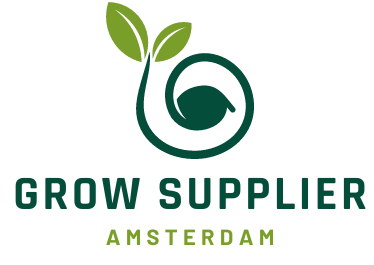Growing with Hydroponics and (R)DWC: What is it and How does it Work?
Hydroponics is one of the most efficient and advanced ways to grow plants. Instead of soil, growers use water to deliver nutrients directly to the plant’s roots, which results in faster growth and increased yields. There are several techniques within hydroponics, and one of the most popular for both hobbyists and commercial growers is the (R)DWC system: Recirculating Deep Water Culture (RDWC) .
What is Deep Water Culture (DWC)?
Deep Water Culture (DWC) is a hydroponic system where plants are placed with their roots in a reservoir of a nutrient-rich, oxygenated water solution. Instead of the roots having to fight their way through the soil to reach water and nutrients, they have direct access to everything they need, resulting in increased nutrient and oxygen uptake.
In a DWC system, the plants are placed in special net pots, which sit on top of a reservoir containing the water solution. The roots hang freely in the solution and absorb the nutrients directly. To ensure that the roots do not drown, oxygen is constantly added via air pumps and air stones, which create micro bubbles and thus provide sufficient oxygen.
What is Recirculating Deep Water Culture (RDWC)?
The RDWC system is an advanced version of DWC, where multiple reservoirs or pots are connected together and a recirculating water pump is used. This ensures that the nutrient solution is constantly circulated through all the pots, keeping the EC (electrical conductivity) and pH values consistent. This makes the RDWC system ideal for larger grow setups, as it makes it easier to give all the plants the same care.
The benefits of an RDWC system include:
- Consistent nutritional values: The circulating solution ensures that the nutrients and pH are evenly distributed across all pots, resulting in a stable growing situation.
- Easy Management: A central control pot allows growers to manage the nutrient solution without having to adjust each pot individually.
- Increased oxygen supply: The constant flow of solution ensures that the roots are provided with an optimal oxygen supply, which stimulates plant growth.
How does an RDWC system work?
In an RDWC system, all pots are connected by pipes that circulate the solution from pot to pot. A water pump pumps the nutrient solution from the control pot through all connected growing pots and then back again. This keeps the nutrient solution in constant motion, and the nutrients and pH values are evenly distributed throughout the system.
Inside each of the pots are air stones, which blow air into the water via a separate air pump, creating micro bubbles. These micro bubbles increase the oxygen concentration in the solution and improve the uptake of nutrients, allowing the plants to grow faster and generate higher yields.
Benefits of Growing with (R)DWC
Growing with an RDWC system offers many advantages for both beginners and experienced growers:
-
Fast Growth: The plant roots have direct access to the oxygen-rich nutrient solution, which promotes nutrient uptake and results in faster plant growth.
-
Higher Yield: Due to efficient nutrient uptake, plants in an RDWC system can often produce higher yields than traditional growing methods.
-
Consistency: The circulating system provides a constant supply of nutrients and oxygen, resulting in stable and uniform plant growth. This is especially important when growing larger numbers of plants.
-
Better control over nutrients and pH levels: Because the solution is constantly circulating, EC and pH levels can be easily monitored and adjusted. This ensures that the plants are in an optimal environment and are less susceptible to diseases and pests.
-
Sustainability: RDWC systems use less water and nutrients than traditional methods, which is not only better for the environment but also saves costs for the grower.
Getting started with an RDWC system
If you are considering getting started with an RDWC system, there are a few important things to keep in mind:
- Check the pH and EC values of your nutrient solution regularly to ensure your plants are getting the right nutrition.
- Maintain the system by changing the water and nutrient solution regularly, especially in larger growing setups.
- Provide sufficient oxygen supply using air pumps and air stones to prevent root rot.
- Use quality materials such as high-quality water pumps, pipes and air stones to ensure the system runs smoothly.
Conclusion
Growing hydroponically, and specifically with an RDWC system, offers numerous advantages for growers who strive for optimal growth and maximum yield. By using oxygenated nutrient solutions and the constant circulation of nutrients and oxygen, plants in an RDWC system can grow faster and stronger. The system is easily adjustable, offers a high degree of control and is suitable for both small and large grow operations. For those who are serious about indoor growing and are looking for a sustainable and efficient way of growing, an RDWC system is definitely worth considering.
